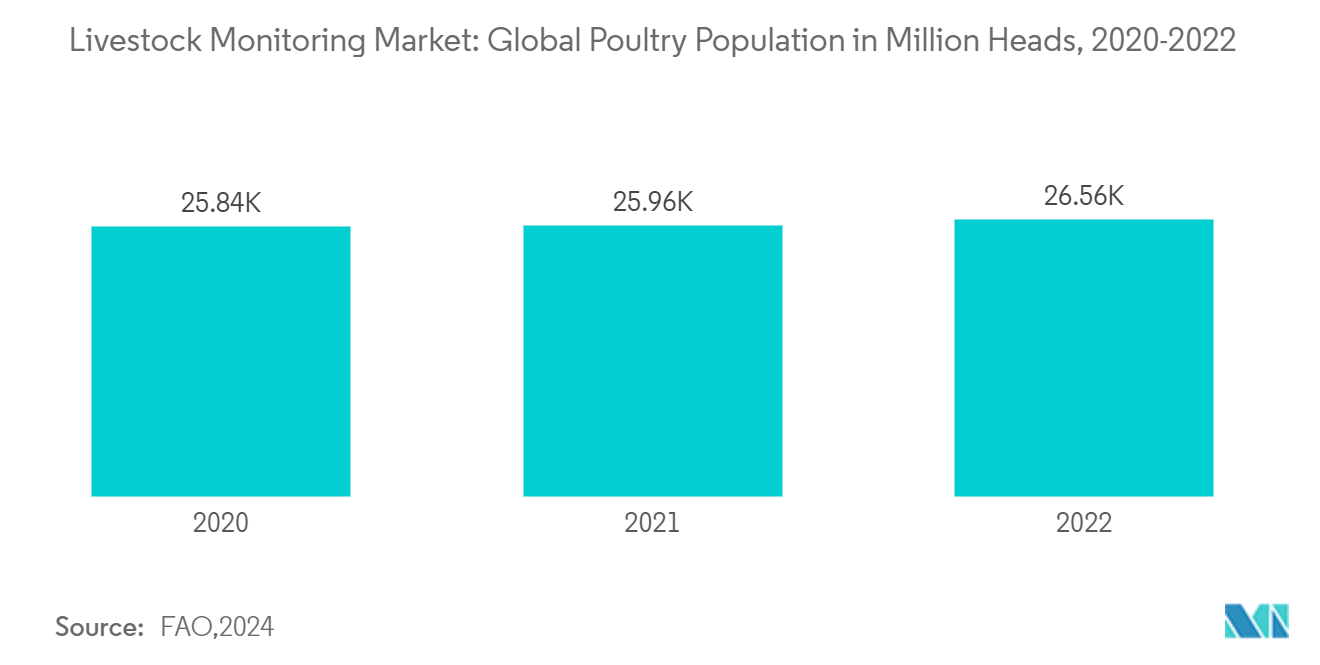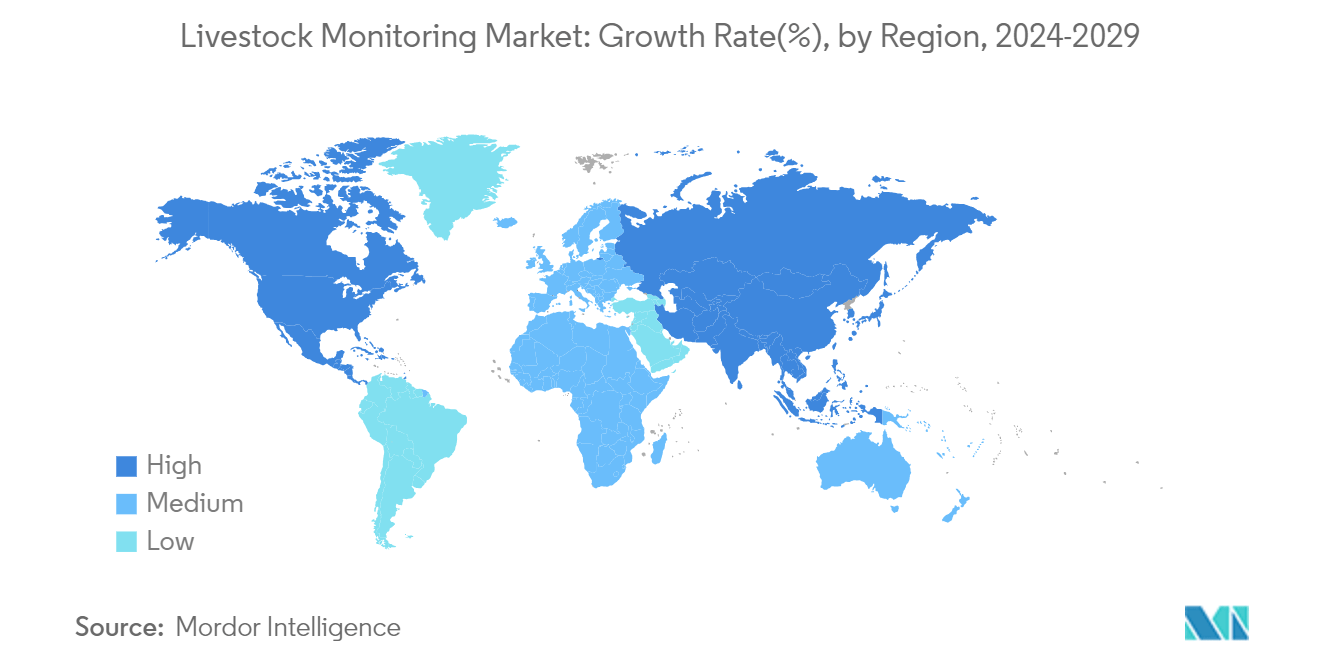Market Trends of Global Livestock Monitoring Industry
Poultry Segment Expects to Drive the Market Growth
- The global livestock monitoring market is experiencing significant growth, driven in part by the expansion of the poultry segment. Poultry farming is one of the fastest-growing segments within the livestock industry, propelled by increasing global demand for meat and eggs. The rise in daily consumption of poultry products is a key factor behind this segment's growth. The Organization for Economic Cooperation and Development-Food and Agriculture Organization (OECD-FAO) Agricultural Outlook report projects that global consumption of meat proteins will increase by 17.8% by 2030 compared to the 2018-2020 base period average.
- Meat consumption patterns are shifting towards poultry. In developing countries with lower incomes, this trend reflects the lower cost of poultry compared to other meats. In high-income countries, the shift indicates a growing preference for white meats, which are easier to prepare and often perceived as healthier. This consumption trend is driving commercial farming, with leading producers such as the United States, China, and Brazil accounting for a substantial portion. The United States Census Bureau projects that the United States population will grow from 319 million in 2014 to 417 million in 2060. This population growth, along with the rising poultry population, has intensified the need for efficient livestock management systems, particularly in leading poultry-producing regions.
- Poultry farmers are increasingly utilizing sensors, wearable devices, and automation technologies to gather real-time data on crucial factors such as temperature, humidity, feed consumption, and bird activity. This information is essential for maintaining optimal conditions in poultry houses, reducing disease outbreaks, and enhancing overall production efficiency. In June 2024, the USDA launched a monitoring and surveillance program to track the spread of avian influenza in the United States, addressing a major concern in the livestock population. This program enables farmers and producers to detect and treat the disease promptly.

North America is Expected to Have a Significant Market Share
- The North American market dominates the global livestock monitoring sector, primarily due to the increasing need for technology to monitor animal health, especially in light of zoonotic disease concerns. The United States and Canada have large and diverse livestock industries, including cattle, poultry, swine, and dairy. As of 2023, the United States had over 94 million cattle, while Canada had approximately 12 million. This substantial livestock population necessitates efficient management solutions.
- Monitoring technologies such as RFID, wearable sensors, and automated data collection systems have become crucial for maintaining herd health, tracking movement, and optimizing feeding practices. According to National Beef Wire data from June 2024, the United States accounted for 18.0% of global bovine meat production in 2023, making it the top producer. Monitoring systems help reduce disease-related losses and ensure animals reach optimal slaughter weight, improving operational efficiency in large-scale farms and driving demand for these technologies.
- Governments, companies, and industry professionals in North America are accelerating the development and implementation of advanced livestock monitoring systems. The United States Department of Agriculture (USDA) has introduced initiatives such as the monitoring and surveillance program, while the Canadian government supports smart farming technologies through its Canadian Agricultural Partnership (CAP). These efforts significantly contribute to the advancement of the livestock monitoring market. Private companies such as BouMatic, Allflex (Merck), and Fancom BV are introducing artificial intelligence-based solutions to monitor and automate farm activities. Additionally, companies are providing cattle care training to caretakers. For instance, Merck Animal Health's Cattle Care365 program offers training for beef cattle caretakers to maintain livestock safety, productivity, and health.


